Table of Contents
- How to Start Welding
- Visual Characteristics of Good Welding
- Factors Influencing Good Welding
- Inspecting Good Welding
- Common Welding Defects and Issues
- Training and Education for Good Welding
- Professional Standards and Certifications
- Advancements in Welding Technology
- Conclusion
- FAQs about What Does Good Welding Look Like
Welding stands as a foundational process in fabrication, construction, and manufacturing. It’s not merely about fusing metals but about creating a strong, durable, and visually appealing connection. But what does good welding look like? Let’s explore the characteristics that distinguish exceptional welds and the factors influencing their quality.
How to Start Welding
Welding is the cornerstone of modern manufacturing and construction, serving as the backbone for assembling diverse structures and products. It’s not merely a technical process but an art form combining science and craftsmanship.
Importance of Welding
Welding is the fabric that binds our world together, quite literally. It’s the process that fuses metals, creating solid and durable connections essential for building infrastructure, machinery, vehicles, and more. Without welding, the modern world as we know it wouldn’t exist. From skyscrapers to intricate metalwork, welding shapes our everyday lives.
Definition and Purpose of Good Welding
Good welding isn’t solely about joining metals; it’s about achieving perfection in the fusion. It goes beyond functionality; it embodies the synergy between artistry and precision. A good weld isn’t just robust; it’s visually appealing, reflecting the expertise and dedication of the welder. The purpose of good welding is to create seamless, enduring connections that withstand the test of time, ensuring safety, reliability, and structural integrity.
Visual Characteristics of Good Welding
Good welding is characterized by distinct visual traits that signify exceptional craftsmanship and technical proficiency.
Smoothness and Uniformity
One of the primary visual indicators of good welding is the smoothness and uniformity of the welded surface. When examining a weld, a smooth finish devoid of bumps, roughness, or irregularities indicates meticulous attention to detail during welding. Achieving this smoothness suggests that the heat applied during welding was evenly distributed, resulting in a seamless connection between the welded materials.
Consistent Bead Appearance
The bead’s appearance, the filler material deposited during welding, holds crucial insights into the quality of the weld. In suitable welding, the bead displays consistent characteristics throughout its length. A uniform appearance without abrupt changes or irregularities signifies the welder’s expertise in controlling the deposition of the filler material. This consistency reflects precise control over the welding process, ensuring an even and firm bond between the metals.
Lack of Defects or Imperfections
Good welding is free from defects or imperfections that might compromise the weld’s structural integrity. Imperfections like porosity, cracks, incomplete fusion, or excessive spatter are minimized in well-executed welds. The absence of these flaws highlights the welder’s skill in meticulously executing each weld, ensuring that the joint remains robust and reliable over time.
Factors Influencing Good Welding
The quality of a weld isn’t solely reliant on the welding process itself; it’s influenced by a myriad of factors that collectively contribute to achieving excellence in welding.
Skill and Technique
At the heart of good welding lies the skill and technique of the welder. Experience, expertise, and a deep understanding of welding methods and materials significantly impact the quality of the weld. A skilled welder can control the welding parameters, such as heat input, electrode speed, and arc length, ensuring precision and consistency in each weld.
Quality of Materials
The materials used in welding play a pivotal role in determining the quality of the final weld. The choice of metals, filler materials, and even gases for shielding impacts the weld’s strength, durability, and appearance. High-quality materials, free from impurities and defects, contribute to achieving superior welds that withstand various environmental and structural demands.
Equipment and Technology
Advancements in welding equipment and technology have revolutionized the welding industry. State-of-the-art welding machines, tools, and innovative techniques enhance a welder’s capability to produce high-quality welds. From automated systems ensuring precision to specialized tools facilitating intricate welds, technology plays a crucial role in elevating the standards of good welding.
The combination of skillful execution, top-notch materials, and cutting-edge technology forms the bedrock of good welding. It’s the synergy of these factors that culminates in welds of superior quality, ensuring reliability and longevity in the structures and products they secure.
Inspecting Good Welding
Inspecting a weld is crucial in determining its quality, integrity, and reliability. Various methods and processes are employed to assess and validate the excellence of a weld, ensuring it meets stringent industry standards.
Visual Inspection Methods
Visual inspection stands as the initial and fundamental method for assessing weld quality. Welders, inspectors, or quality control personnel visually examine the weld, looking for surface irregularities, discontinuities, or deviations from specified criteria. This visual scrutiny helps identify defects or imperfections that may compromise the weld’s strength or functionality.
Testing and Evaluation Processes
Beyond visual inspection, several testing and evaluation techniques further validate the quality of a weld. Non-destructive testing methods like ultrasonic testing, radiographic testing, magnetic particle testing, and dye penetrant testing delve deeper into the weld’s structure, identifying internal flaws or defects that might not be visible to the naked eye. These methods ensure a comprehensive evaluation, confirming the weld’s soundness and adherence to prescribed standards.
Importance of Thorough Inspection
Thorough inspection is a critical checkpoint, ensuring that welded joints meet the specified quality criteria. A meticulously inspected weld guarantees structural integrity, safety, and longevity, especially in industries where weld failures can have severe consequences. Additionally, inspection reports and compliance with industry standards assure quality for stakeholders and regulatory bodies.
Common Welding Defects and Issues
Welding, while a critical aspect of many industries, is not immune to imperfections. Understanding the common welding defects and issues is essential for novice and experienced welders to produce high-quality, reliable welds. Here, we’ll delve into some prevalent welding defects and their causes.
Examples of Bad Welding
- Porosity: This defect appears as small cavities or bubbles within the weld metal. Porosity weakens the weld by creating voids, reducing its strength and making it susceptible to cracks. It’s often caused by contaminants like moisture, grease, or rust on the welding surface or improper shielding gas coverage during welding.
- Cracks: Cracks can form during or after welding due to various factors such as rapid cooling, high-stress concentrations, or improper filler material. These cracks compromise the integrity of the weld, leading to structural weaknesses.
- Incomplete Fusion or Penetration: When the weld doesn’t adequately bond with the base material or filler metal, incomplete fusion or penetration occurs. It results in weakened joints and can lead to joint failure under stress.
- Undercutting: Undercutting is a groove formation along the weld toe or edges, weakening the structure. It typically occurs due to excessive heat or improper welding techniques, reducing weld strength.
Comparison: Good vs. Bad Welds
To understand the significance of these defects, it’s essential to compare good and bad welds side by side:
- Visual Inspection: A good weld appears uniform, with a smooth bead appearance, consistent penetration, and minimal surface irregularities. In contrast, a bad weld exhibits visible defects like porosity, cracks, or irregularities in the bead.
- Structural Integrity: A well-done weld ensures the joint’s strength and durability, maintaining structural integrity even under stress. Bad welds compromise structural strength and can fail prematurely.
Rectifying Common Defects
Rectifying welding defects requires identifying their root causes and implementing corrective measures:
- Cleanliness and Preparation: Properly cleaning the welding area and ensuring the materials are free from contaminants significantly reduce defects like porosity.
- Optimal Welding Parameters: Adhering to the correct welding parameters, such as heat, current, and speed, helps prevent issues like incomplete fusion or penetration.
- Skill Enhancement and Training: Continuous improvement in welding techniques through training and practice minimizes the occurrence of defects.
Training and Education for Good Welding
Mastering the art of welding requires more than just hands-on experience; it necessitates comprehensive training and education. Proper instruction and resource access are pivotal in shaping skilled welders capable of producing high-quality welds.
Importance of Proper Training
Adequate training forms the foundation for welders to hone their skills and understanding of welding techniques. Formal education programs, apprenticeships, vocational training, and specialized courses offer aspiring welders the opportunity to learn welding fundamentals, safety protocols, and advanced welding methods. Through structured training, individuals grasp the theoretical and practical aspects of welding, empowering them to execute precise and reliable welds.
Resources for Learning Welding Techniques
Numerous resources cater to individuals seeking to enhance their welding expertise. From technical manuals, online tutorials, and workshops to hands-on training in welding laboratories, these resources offer diverse avenues for learning. Welders can access up-to-date information on welding technologies, materials, and industry best practices, enriching their knowledge and skill set.
Continuous Learning and Skill Enhancement
The dynamic nature of welding, with constant technological advancements and evolving industry standards, emphasizes the need for ongoing learning. Welders must stay abreast of new welding techniques, equipment, and safety protocols through continued education and professional development. This commitment to continuous learning ensures that welders remain adept at producing top-notch welds aligned with current industry standards.
Professional Standards and Certifications
Within the welding industry, adhering to professional standards and obtaining certifications is a testament to a welder’s expertise and commitment to quality.
Certifications for Welders
Various certifications validate a welder’s proficiency and competence in specific welding processes, techniques, and materials. Certifying bodies such as the American Welding Society (AWS) offer certifications demonstrating a welder’s ability to meet industry standards. These certifications encompass different welding positions, materials, and methods, providing a standardized measure of a welder’s capabilities.
Industry Standards for Quality Welding
Adherence to industry standards is imperative in ensuring the quality and reliability of welded joints. Standards set guidelines and specifications for welding procedures, materials, and inspection protocols. Compliance with these standards guarantees that welds meet the prescribed criteria for strength, durability, and safety, essential in various sectors such as construction, manufacturing, and aerospace.
Importance of Certification and Compliance
Certifications validate a welder’s skills and instill confidence in clients, employers, and regulatory bodies regarding the quality of welded structures or components. Compliance with industry standards ensures that welds meet the specified requirements, fostering trust and reliability in the products or structures incorporating these welds.
Advancements in Welding Technology
The welding landscape continues to evolve with technological advancements, introducing innovative techniques and tools that elevate the standards of welding practices.
Innovations Improving Welding Quality
Technological innovations have revolutionized welding processes, enhancing precision, efficiency, and the overall quality of welds. Advanced welding machines with sophisticated controls allow for precise adjustments, ensuring consistent and flawless welds. Additionally, developments in welding consumables and shielding gases contribute to improved weld quality by minimizing defects and enhancing material compatibility.
Future Trends in Welding Techniques
The future of welding holds promise with ongoing research and development in various areas. Automation and robotics in welding are transforming the industry, enabling highly precise and repetitive welds while reducing human error. Furthermore, additive manufacturing or 3D printing techniques are expanding possibilities, allowing complex geometries to be fabricated with unprecedented precision.
Impact on Welding Quality
These advancements not only streamline welding processes but also elevate the quality of welds. Enhanced precision, reduced variability, and the ability to tackle intricate welding tasks create more robust, durable, and aesthetically superior welds. Welding technologies of the future aim to improve efficiency further, reduce environmental impact, and expand welding applications across industries.
Conclusion
In welding, pursuing excellence is not just a goal but a necessity. Good welding isn’t solely about creating strong connections between metals; it’s an amalgamation of skill, technology, and adherence to stringent standards. From the visual cues of smoothness and consistency to the absence of imperfections, suitable welding embodies precision and expertise.
Training, certifications, and technological advancements continually elevate the standards, ensuring welds meet the highest durability, reliability, and safety criteria. The commitment to producing exceptional welds remains unwavering as the welding industry evolves. Each weld represents not just a fusion of metals but a testament to the dedication, mastery, and innovation within the art and science of welding.
FAQs about What Does Good Welding Look Like
How can I visually identify a well-done weld?
Look for smoothness, uniformity, and consistency in the bead appearance.
Are there specific certifications for welders?
Yes, various certifications validate a welder’s expertise, such as AWS certifications.
Why is proper training crucial in welding?
Proper training ensures mastery of techniques, reducing the likelihood of defective welds.
What are some common welding defects to watch out for?
Porosity, cracks, and lack of fusion are common defects indicating poor welding.
What role does technology play in modern welding?
Technology drives advancements, introducing automated systems and precision techniques to enhance welding quality.
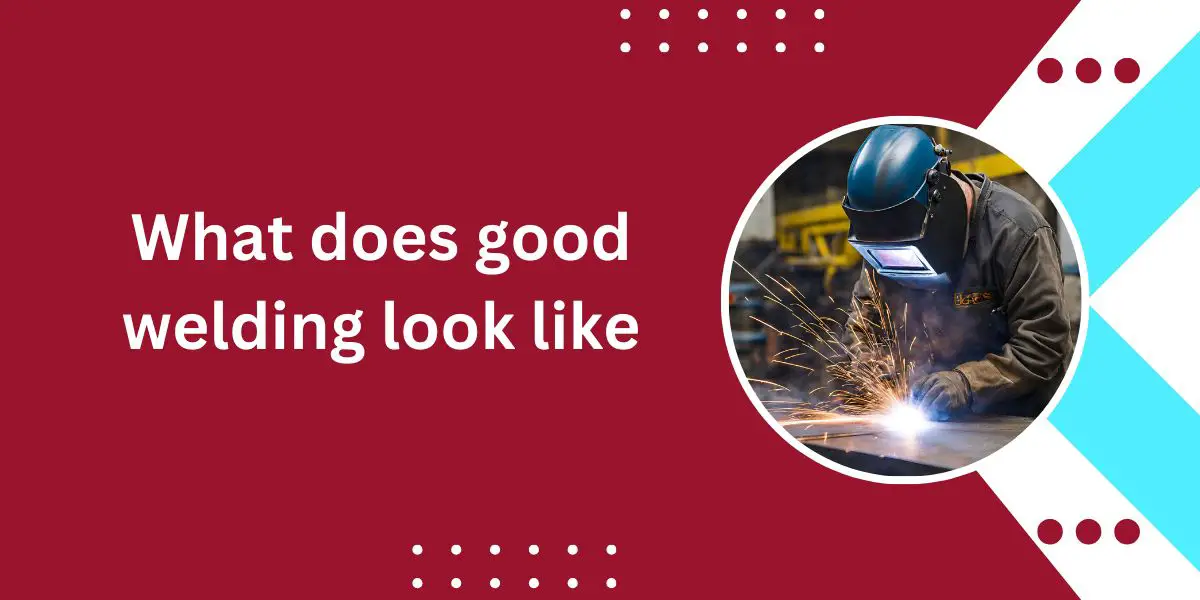
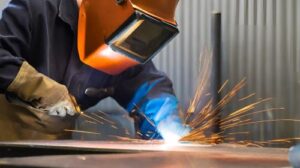
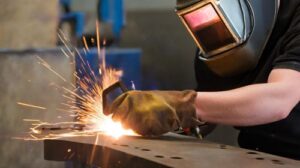
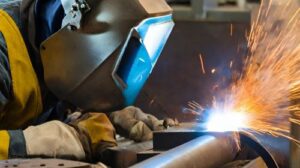
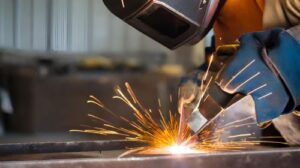
6 thoughts on “What Does Good Welding Look Like? Unlocking the Secrets”